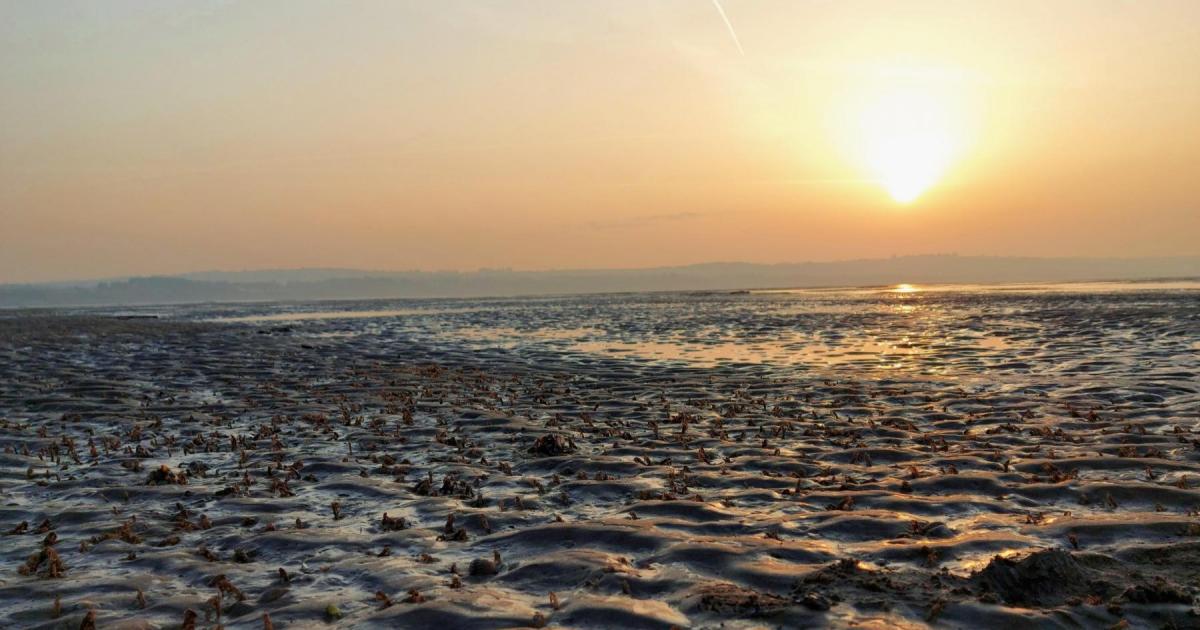The area, which straddles England and Wales, has been at the centre of a three-year pioneering project, bringing together partners across borders to deliver lasting change through community-led conservation.
Our Dee Estuary has been funded by the National Lottery Heritage Fund, with contributions from local authorities, charities, statutory bodies and renewable energy companies, and 130 volunteers have given up more than 4,000 hours of their time to practical conservation works, surveying, events, research and writing.
Early on in my role on the project, I was invited on a cockle survey with Natural Resources Wales, which manages the cockle fishery in the estuary. This meant a very early start watching the sun rise and the chance to walk out into the middle of the estuary safely with trained professionals. Seeing the wide expanse and exploring the mudflats for the first time was a very special moment, and the estuary captured my heart.
The aim of the project was to restore, create and improve habitats, allowing more space for nature. Targeted action was taken for important species such as natterjack toads and grayling butterflies, bringing experts and partners together from both sides of the estuary to work with these focal species.
Collaborative working has not only improved the long-term conservation of specialist habitats and species but also the network of volunteers involved in these groups. The work that has been carried out and the direct improvement of 15.2 hectares of estuarine habitat couldn’t have been done without partner co-operation and the large number of volunteers.
Highlights include
* Sand dune management sessions from Presthaven Sands and Talacre across to Red Rocks Nature Reserve in Hoylake, removing vegetation to expose the sand dunes, building hedges out of branches to block and create footpaths, scything common reed to promote growth and biodiversity and invasive plant removal.
*Sea holly planting at Red Rocks Nature Reserve to increase food sources for the endangered grayling butterfly. The plants were propagated by Chester Zoo.
*Improving conditions for natterjack toads at Gronant, Talacre, Bettisfield and Red Rocks Nature Reserve. This work meant scraping out ponds of weeds and reeds, keeping them clear for toads.
*Butterfly transects have been created at Talacre sand dunes, as well as regularly walked transects at Red Rocks Nature Reserve. There are many more transects in the project area surveyed by dedicated individuals and ‘Friends of…’ groups. This data is recorded and fed into a national database to create a regional and national picture of butterfly populations.
*Natterjack toad surveys take place at Talacre and Red Rocks Nature Reserve during breeding season, which starts in April and lasts until late June/early July. We count the adults during evening surveys as they are nocturnal. During the day, we count spawn string in the dedicated breeding pools.
*Reedbed management at Neston reedbed and Parkgate by RSPB Dee Estuary.
My colleagues and I hope these improved habitats along the estuary will benefit the area and the species that call this place home well into the future.
People have volunteered their time, developed skills and gained pride in the Dee Estuary’s global significance. Over the course of the project, a safe and inclusive space has been created, with events attracting more than 2,500 visitors, and communications reaching more than 160,000 people.
New interpretation signs on both sides of the estuary explain the natural heritage of the surrounding area. A dedicated website gives information in either Welsh or English.
Our Dee Estuary has provided opportunities in all kinds of areas, not just practical conservation, including sound recording, guided walks, dog-friendly events, litter picks, strandline searches, talks and presentations, wellbeing and yoga sessions.
The volunteers involved with the project feel they have benefitted from meeting people, noticing nature, learning more about the natural environment on their doorstep and giving their time to citizen science
The Dee Estuary is one of the largest coastal wetlands in the UK. It’s a place of beauty, solace, purpose and often unpredictable weather. Although the project is at its end, it has made a lasting impact on cross-border working and collaboration and encouraged further collaborative working from partners who are all striving to achieve the same goal – long-term sustainable conservation of the estuarine environment and the recreation, work and heritage it provides to local communities. After all, the Dee Estuary operates as one entity, the ebb and flow of the tides coming and going every day, never knowing that there’s a country border down the middle of it.
The project has also given some amazing groups in the area a bigger voice to shout about what they do.
We’re so grateful to everyone who has taken action and joined us in our mission to create a lasting community of stewardship to look after the Dee Estuary long into the future.
There’s so much to see and do on and around the Dee Estuary. Visit ourdeeestuary.co.uk for information on planning a visit.
